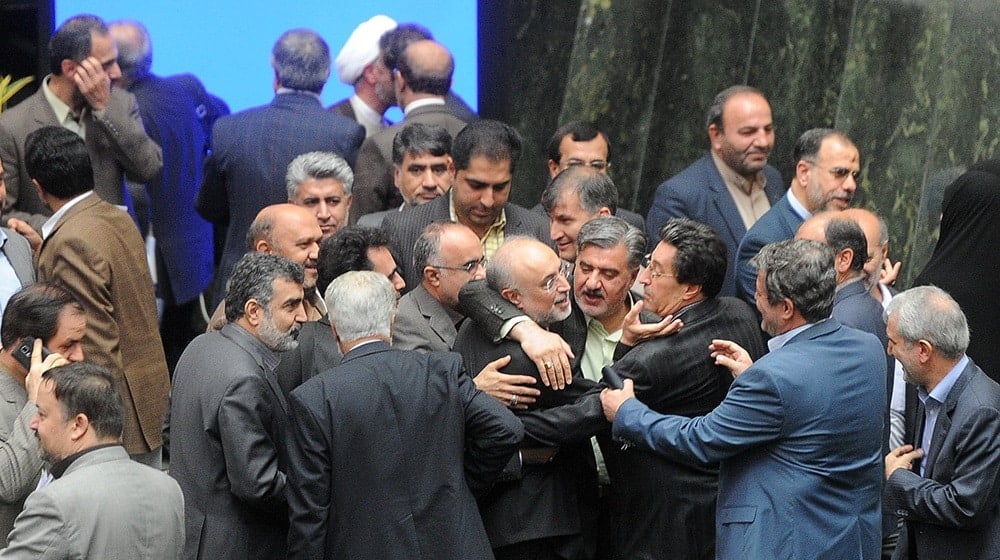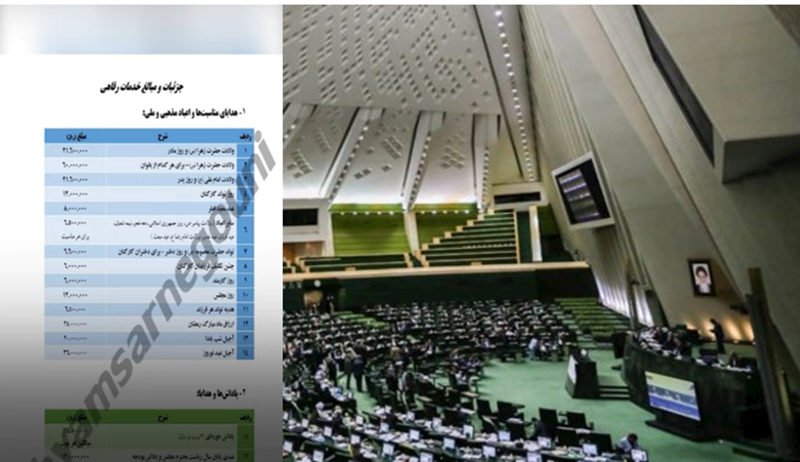
On February 13, a significant cyber intrusion was reported, affecting the Iranian regime’s Parliamentary news outlet, Khane Mellat News Agency, rendering it inaccessible.
The dissident group, Ghiam Sarnegouni, which translates to Rise up to Overthrow, claimed responsibility for this sophisticated cyber assault. The group announced that it had seized control of over 600 servers belonging to the Parliament, including critical infrastructure such as the main server, commission servers, the main hall server, and database servers, among others.
This cyber operation exposed sensitive information, shedding light on the regime’s internal security measures and its manipulative practices within the Islamic Consultative Assembly (Majlis). Documents leaked in the aftermath reveal the regime’s apprehensions during the 2022 uprising, particularly fears of defections among its ranks and the potential for authorities to adopt political positions at odds with the establishment.
The leaks provide insight into the extent of surveillance and control exerted over members of Parliament (MPs). Some MPs were identified as “disruptive representatives” in a confidential report to the Speaker of the Parliament, M.B. Ghalibaf. Security agencies took measures to monitor the communications of MPs and staff, aiming to thwart their participation in protests or any collaboration with demonstrators. This surveillance extended to legislative staff, with efforts focused on preventing their involvement in street protests and mitigating “psychological tension.”

State-run Ruydad 24 highlighted the hacker group’s claim regarding the Legislative Branch’s Security Department’s efforts to suppress any dissent or stance on sensitive issues such as Mahsa Amini’s case.
A report from the Parliament’s Security Council detailed the countermeasures implemented during the nationwide protests of 2022. These measures included monitoring MPs for potential participation in protests, stationing security forces around Parliament, and the strategic removal of garbage bins to prevent their use in acts of protest. The report also named specific MPs considered as disruptive elements, with one, Jalal Rashidi Kouchi, being disqualified from participating in future elections.
The cyber-attack’s impact was palpable within the parliamentary proceedings. On February 14, difficulties arose during a session due to malfunctions in the electronic voting system, forcing MPs to revert to a manual voting process.

Furthermore, the newspaper Kayhan, closely aligned with the Supreme Leader’s office, suggested that the attack aimed to discredit the Parliament and sow distrust among revolutionary forces.
It attributed the incident to a coordinated effort by foreign intelligence agencies, including the CIA and Mossad, highlighting the complexities of internal and external challenges facing the Iranian regime amidst rising tensions.

MEK Iran (follow us on Twitter and Facebook), Maryam Rajavi’s on her site, Twitter & Facebook, NCRI (Twitter & Facebook), and People’s Mojahedin Organization of Iran – MEK IRAN – YouTu
